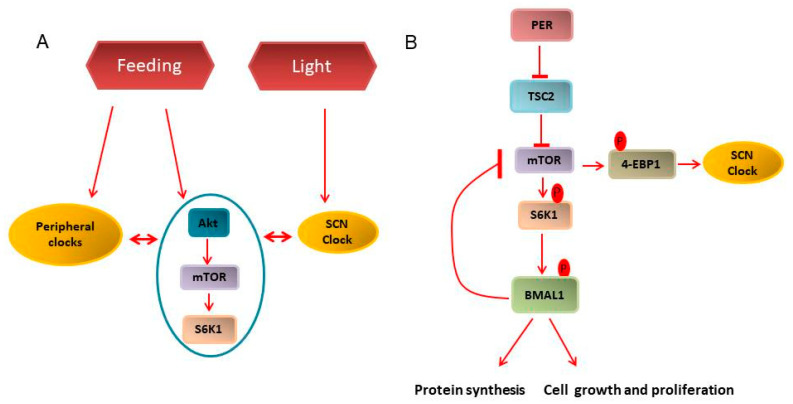Figure 3.
Clock and mTOR pathway interconnection. (A) Environmental cues such as light synchronizes the master clock in suprachiasmatic nucleus (SCN) while feeding regimen entrains the peripheral and metabolic clock. Further, peripheral and SCN clocks directly cross-talk with the metabolic clock, i.e., PI3K/Akt/mTOR. (B) mTORC1, through 4-EBP1 phosphorylation, regulates the SCN clock. In the periphery, a feedback loop is formed in which mTORC1 regulates BMAL1 activity through S6K1 mediated phosphorylation, while BMAL1 accumulation, in turn, inhibits mTOR activity. Constitutive mTORC1 activation for example, by Tsc2 inhibition, disturbs this feedback loop that could, in turn, drive uncontrolled protein synthesis, cellular growth and proliferation, thus, contributing to cancer development.

